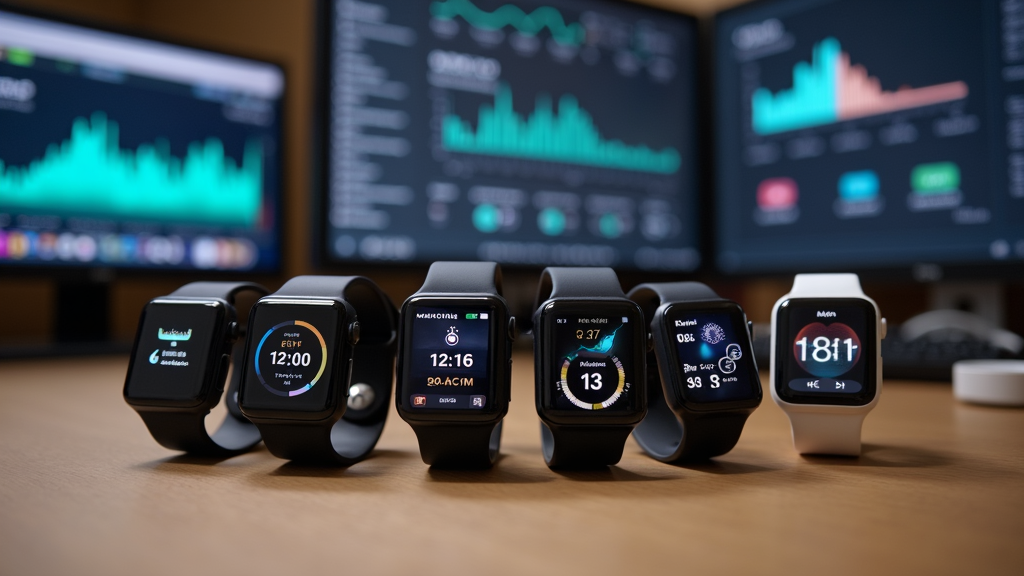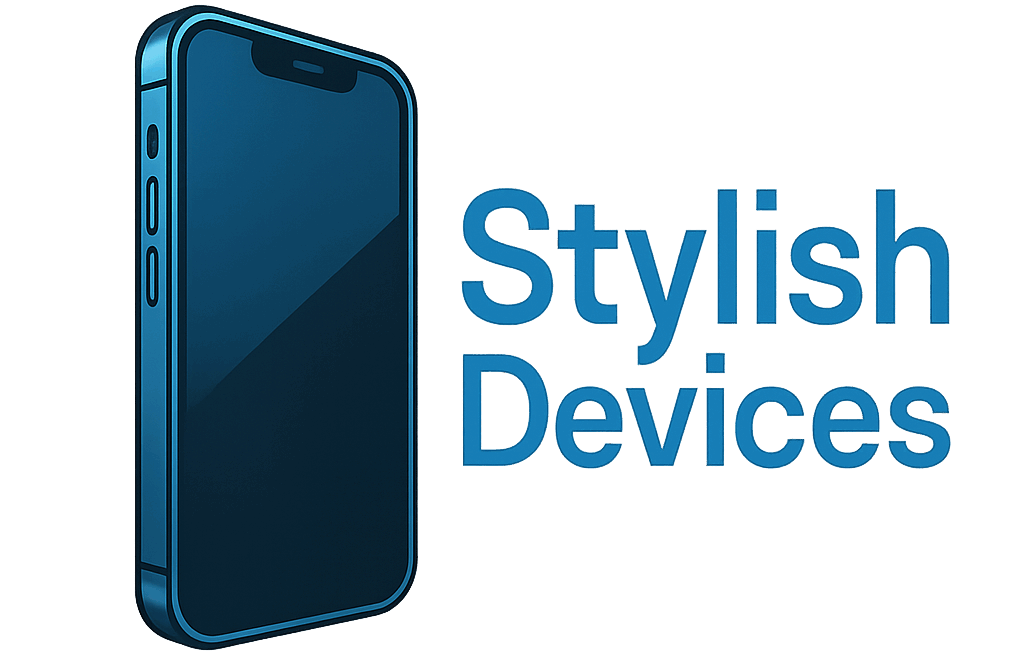Smart watches have quickly become a common part of daily life for tracking health and fitness. When it comes to monitoring blood pressure, the demand is growing as more people focus on understanding their cardiovascular health without needing bulky equipment. I put this article together to share which smart watches can measure blood pressure, how accurate these readings are, and what features matter if you’re searching for one.

Smart Watches That Measure Blood Pressure: An Overview
Blood pressure monitoring by smartwatch offers a new level of convenience. Unlike traditional cuffs, these devices give you readings right from your wrist, whenever you want. The technology isn’t perfect, but the best options do provide valuable insights for daily tracking and early warning signs.
The smartwatch market is growing fast, with the health sector now a core part of most major brands’ lineups. Blood pressure tracking used to be limited to specialized fitness trackers, but now you’ll find it on regular consumer models. This switch up reflects how personal health tech is meeting users where they are, on the move.
Knowing which smartwatch tracks blood pressure can be tricky, though, because not every brand includes this feature. Some rely on optical sensors, while others provide integrated inflatable cuffs. The approach can impact the data’s reliability and the watch’s comfort.
How Blood Pressure Monitoring Works on Smart Watches
Most smartwatches that measure blood pressure use photoplethysmography (PPG) sensors. Basically, this means lights and sensors read changes in blood volume under your skin. Some watches ask for a baseline calibration using a standard arm cuff, so they can fine-tune their readings. This mix of tech and science is what makes wrist-based measurements possible, though there are differences in how brands develop it.
Only a few watches have an inflatable cuff as part of the wristband. These tend to offer higher accuracy, but they also make the watch bulkier, so daily comfort might be affected. On the other hand, optical systems are lighter and look more like a typical watch, but they need careful positioning and regular calibration to stay useful.
- PPG (Photoplethysmography): Uses light to measure blood flow and estimate blood pressure. Most common on popular smartwatches.
- Oscillometric (Cuff Based): Uses a small inflatable cuff built into the watch band for more traditional readings, which may be more reliable.
Popular Smart Watches With Blood Pressure Monitoring
I’ve checked out several models that offer blood pressure tracking. Each comes with its own pros and cons. Below are some that really stand out for both accuracy and extra features.
- Samsung Galaxy Watch Series: One of the most popular choices, especially from the Galaxy Watch 3 onwards. These watches require you to calibrate using an actual blood pressure cuff about once a month, which helps keep the readings closer to reality. Samsung’s Health Monitor app then does the tracking for you.
- Omron HeartGuide: This is actually FDA cleared and has a built-in inflatable cuff around the wrist. The readings are considered more clinical, though the device is chunkier and looks less like a standard watch. Omron also connects with a dedicated app to keep long term records of your blood pressure.
- YHE BP Doctor Pro and BP Doctor Med: These are less known in the US market but quite well reviewed in online communities. They also use wrist cuffs and focus almost entirely on blood pressure monitoring. Their battery life is a bit shorter because of the cuff’s use, but if blood pressure is a priority, these models are worth a look.
- Huawei Watch D: This smartwatch is gaining traction for its inflatable micropump and solid reviews in terms of accuracy. It’s not widely available everywhere, but if you have access, it blends health monitoring and typical smartwatch functions well.
- Aktiia Bracelet: Not a traditional watch, but worth mentioning since it measures blood pressure around the clock using optical sensors. It’s worn like a watch but has no regular display. Data syncs with your phone, focusing almost strictly on blood pressure trends.
Some models from Fitbit, Apple, and Garmin track heart rate variability and provide some blood pressure analysis based on that, but they do not directly measure blood pressure yet. Always check the specs before buying, since many manufacturers include words like “blood pressure” in marketing without offering true readings.
Quick Tips for Choosing a Smartwatch With Blood Pressure Capability
Making the right choice starts with knowing what you want in terms of health data and daily use. I like to look for watches that feel good to wear all day since comfort makes regular measurements much easier. Here’s how I usually narrow down my search:
- Check for Real Blood Pressure Monitoring: Not every watch that says it tracks “health” or “vitals” measures blood pressure. Read the product description and reviews for confirmation.
- Comfort and Style: If you’ll wear this every day, make sure the strap and size work for you. Cuff based watches tend to be heavier, so try before you buy if you can.
- App Support: Look into whether your phone (Android or iOS) is compatible with the watch and its health data app. Easy data exporting and syncing can really help track trends over time or share data with your doctor.
- Battery Life: Features like an inflatable cuff can drain a battery quickly. Fewer functions sometimes mean longer battery life, so choose based on your preferences.
- Calibration Needs: Some watches ask for calibration as often as every two weeks. If you want a low maintenance routine, factor this into your decision.
Starting with these priorities reduces the risk of disappointment and makes it much easier to track your health consistently. Take time to read customer reviews and see which brands stand behind their accuracy claims. Many manufacturers update their apps frequently, adding new insights, so check for ongoing support.
Challenges To Expect With Blood Pressure Smartwatches
Wrist based blood pressure readings are not as exact as medical grade upper arm monitors. I’ve found that most watches provide trends and average values that are useful for spotting patterns, but not precise enough for medical diagnosis. It’s important to keep expectations realistic when comparing results to what your doctor’s cuff would show.
- Sensor Positioning: These devices require proper placement on your wrist. If the watch shifts during the day, readings may become less reliable. Taking a reading at rest, with the watch at heart level, improves consistency.
- Movement Artifacts: Movement during measurements can interfere with the sensors, creating false readings. Sitting still and following the watch’s instructions makes the data better.
- Regulatory Limits: Not every watch that claims blood pressure tracking is cleared by regulators like the FDA or CE. This means their use is intended more for wellness tracking than clinical use.
- Compatibility Issues: Some watches work only with certain phone brands or operating systems, meaning your purchase should fit your tech ecosystem.
Sensor Accuracy
While technology keeps improving, most brands make it clear that their watches are made for daily tracking and wellness rather than medical grade accuracy. Medical professionals usually recommend not relying only on smartwatches for treatment decisions. These gadgets are great for catching trends and tracking how lifestyle changes affect your averages. Still, I always tell people to double check unusual readings with a validated home cuff and discuss anything concerning with a doctor. Remember, accurate measurements sometimes depend on proper setup and following the brand’s guidance closely.
Extra Features That Can Make a Difference
Aside from blood pressure, these smartwatches usually bundle in multiple sensors and tools. I always look for extras that support day to day wellness, since an all in one watch keeps my pocket and mind uncluttered.
- Heart Rate Tracking: Almost every model pairs blood pressure tracking with an optical heart rate sensor for doing 24/7 insights.
- SpO2 (Oxygen Saturation): Monitoring oxygen levels is helpful, especially if you have certain medical conditions or enjoy sports at higher elevations.
- Sleep Tracking: Many watches log sleep cycles, helping you connect blood pressure changes with restful or restless nights. Understanding your sleep trends can help spot what causes spikes or dips in your blood pressure statistics.
- ECG/EKG: Some models record electrocardiogram data, flagging irregular heart rhythms like AFib, providing a more all in one health perspective.
Picking a watch with extra features means you can track more than just blood pressure. This wide array of data is helpful for anyone actively managing heart health or trying to pick up on health changes early.
Frequently Asked Questions About Blood Pressure on Smart Watches
I get plenty of questions about what you can expect from smart watch blood pressure tracking. Here are the answers to some of the most common:
Question: How accurate are blood pressure measurements on smartwatches?
Answer: Wrist based measurements are less accurate than arm cuff devices, especially for clinical purposes. They’re best for spotting trends, not replacing regular doctor’s visits. If you get a measurement that seems way off, be sure to double check it with a standard home blood pressure monitor.
Question: Which smartwatch is the best for blood pressure monitoring?
Answer: I find the Samsung Galaxy Watch series and Omron HeartGuide to offer some of the best experiences for daily blood pressure tracking. If maximum accuracy is important, the HeartGuide or similar cuff based watches are a smart choice. Some of the smaller brands, like YHE, can also work well if your priority is continuous blood pressure data.
Question: Do I need to calibrate my smartwatch?
Answer: Many watches (like those from Samsung) require you to calibrate with a regular blood pressure cuff. This step keeps their readings in line with standard monitors, so always follow the device’s instructions for calibration frequency and methods.
Wrapping Up
Smartwatches that measure blood pressure put valuable data right at your fingertips every day. While they can’t replace clinical devices, they’re a useful tool for tracking patterns, supporting better lifestyle choices, and sharing data with healthcare providers. I recommend prioritizing comfort, compatibility, and real blood pressure tracking features if you’re looking to make a purchase. With the right watch, you’ll stay informed and supported in your daily health routines.
Stay curious about new updates, as both software and hardware are improving quickly. Tracking your blood pressure with a smartwatch is becoming easier, smoother, and more reliable with each new release. Keep asking questions and stay proactive about your health. With the right tools, being health aware can fit right into your daily life and put you in control of your well being.
